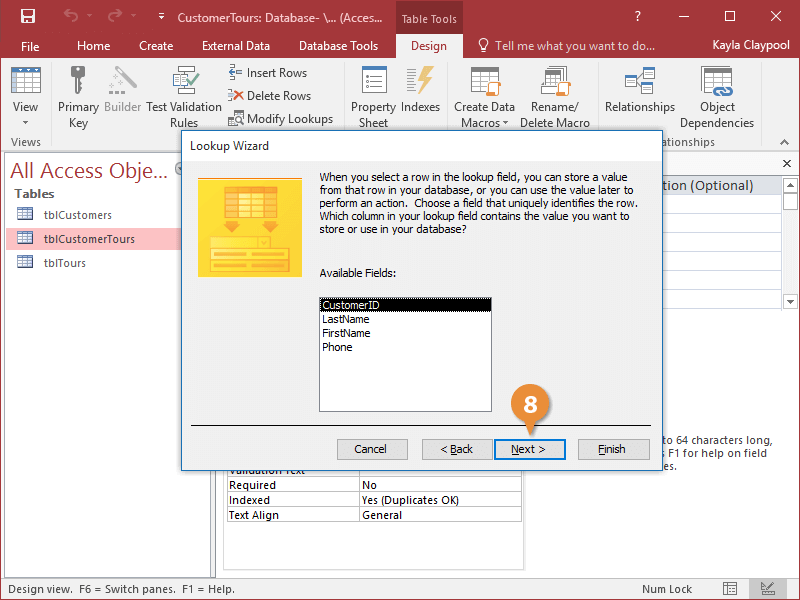 Enter a label for the lookup column and click Finish. Click Yes to save the table.
Enter a label for the lookup column and click Finish. Click Yes to save the table.
You can select to Allow Multiple Values. If you select this box, Access allows you to select multiple values from your list and store them in a single field (a multi-value field) For example, if a single product is made in two different countries, you can display both countries.
- Click any record in the column where you created the lookup list.
- Click the list arrow and select a value from the list.
You can also select an option from a lookup field by typing the first few values of the entry and then selecting from the results.
Access adds the value you selected to the field.